
Pontiac Polaris - The Stillborn Rear Engine Pontiac.
This is one of the many articles published in the monthly NJACE Fanbelt
newsletter.
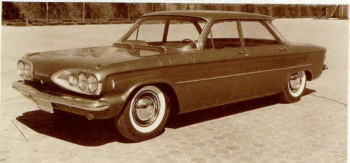
Did you know that Pontiac almost built its own version of the Corvair?
Well, it's true. In 1958, GM's Corporate Office tried to pressure Pontiac
Motor Division into accepting the Corvair as the basis of its own early
1960s compact car. GM Styling went so far as to build a prototype,
named the Pontiac Polaris.
Basically, the Polaris was a '60 Corvair sedan with wide headlight bezels
and oval taillights; styling cues taken from the full-size '59 Pontiac. Pictures published in the February 1987 issue of Collectible Automobile
confirm that, aside from these cosmetics, the Polaris was a rear-engine
Corvair under the skin.
But a production version of the Polaris was not to be. On pages 54
through 56 of the controversial book, On a Clear Day You Can See General
Motors, John Z. DeLorean explained what happened. DeLorean, head of Pontiac
Engineering, and Bunkie Knudsen, general manager of Pontiac Motor Division,
kept tabs on Chevy's progress in developing the Corvair, and they didn't
like what they saw.
"
Frank Winchell, now VP of Engineering, but then an
engineer at Chevy, flipped over one of the first prototypes on the GM test
track in Milford, Michigan. Others followed. The questionable safety of the
car caused a massive internal fight among GM's engineers over whether the
car should be built with another form of suspension.
"
When Ed Cole refused
to upgrade the Corvair's swing axle design, Pontiac Motor Division lost
interest in producing the Polaris. In its place, DeLorean and Knudsen began
to develop a much different compact car: the Tempest.
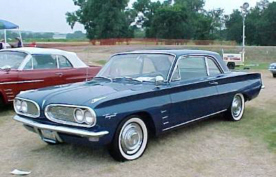
Today, most people remember the Tempest as the platform for the Pontiac GTO
muscle car, a conventional GM ox-cart with a high performance V-8. But
the original Tempest, the one engineered by John Z. DeLorean's engineering
department, was anything but conventional. It was one of the most radical
car design ever sold to the public by a major American manufacturer. And,
like most innovative GM cars, the original Tempest design was abandoned as
soon as the company began to iron out its teething problems.
The Tempest was introduced in 1961. Like the Corvair the year before, this
new design received Motor Trend's Car of the Year Award. Journalists heaped
praise on the '61 Tempest because of its unique features. For one thing, it
had perfect 50/50 weight distribution. And despite it's front
engine/rear-wheel drive layout, it had virtually no drive train tunnel
running through the interior, leaving lots of leg room for six passengers. Furthermore, the Tempest had a simple four cylinder engine for good economy
and easy repair.
On paper, it looked like Pontiac had achieved all the advantages Chevy
sought in the Corvair without the rear-weight bias and complex engineering. How did they do it?
With rope drive! Yes, the Tempest used a flexible, curved driveshaft that
gently arched beneath the interior to lower the drivetrain tunnel. In
principle, the driveshaft worked like a big, thick speedometer cable. And to
make the drivetrain tunnel even less intrusive, Pontiac stuck the
transmission in the back of the car, in unit with the differential.
So, like the Corvair, the Tempest had a transaxle in the rear.
The engine remained up front. And what a strange engine it was! Like the
successful Chrysler slant six, the Tempest Indy Four was an in-line engine,
leaned over toward one side. Unlike the Chrysler six, which was
engineered from scratch, the Indy Four was simply a Pontiac 389 V-8 chopped
in half.
If you take 389 cubic inches and divide by 2, you get 194.5. And that was
exactly the size of the Tempest Indy Four: 194.5 cid. This was the biggest
four cylinder car engine offered anywhere in the world. Like most really big
fours, the Indy Four vibrated badly. Even DeLorean admitted that the Tempest
"rattled so loudly that it sounded like it was carrying half a trunkful of
rolling rocks." That's where the Tempest miracle began to unravel.
The Tempest not only had a loud buzzy engine. It also had swing axles. Ironically, the Tempest's rear suspension was a virtual duplicate of the
early series Corvair suspension that DeLorean despised. And to make matters
worse, Tempests came exclusively with skinny 15 inch tires. Ostensibly, the
large diameter tires gave "greater ground clearance and better tire wear",
but they also raised the center of gravity. So Tempests didn't stick to the
road very well.
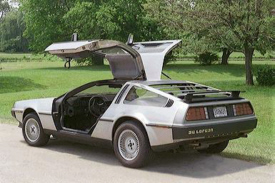
Rope-drive Tempests were built from 1961 to 1963. In 1963, Pontiac face
lifted the Tempest with a really attractive new body. And Pontiac began
equipping Tempests with a smooth-running 326 cid V-8. That solved the
problem with the loud buzzing engine. For those who insisted on four
cylinder economy, the Indy Four was upgraded with more horsepower.
Other improvements included a 20 gallon fuel tank, Delcotron alternator,
wider track, and more, all standard equipment. There was talk of revising
the rear suspension with double-jointed half-shafts, much like the second
series Corvair. But in 1964, Pontiac threw in the towel, making the Tempest
a mechanical clone of the conventionally-engineered Chevy Chevelle,
Oldsmobile F-85, and Buick Special.
Maybe Pontiac should have gone ahead and built the rear-engine Polaris after
all. Years later, John Z. DeLorean, the father of the Tempest, left General
Motors and started his own car company. He produced a sports car called the DeLorean DMC-12 and it had the engine in the rear, just like the Corvair.

Corvair - The most innovative cars and trucks ever produced in America!
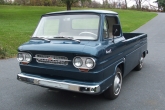
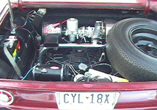
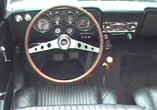
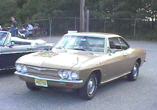
Click HERE to go back to the NJACE Home Page. Edited by redbat01@verizon.net on 10/23/2023